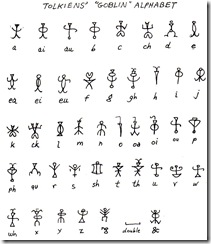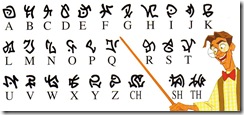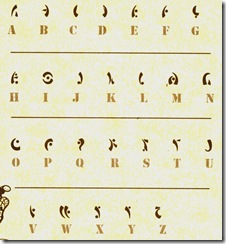Adam Blatner
Words and Images from the Mind of Adam Blatner
Writing Systems (Autobiographic Notes)
Originally posted on January 27, 2011
(I’m putting this in autobiographical notes as well as scriptology): Why am I interested in this aspect of culture? Here are some more personal reflections.
I always knew there was something special about writing. (Not the contents of literature, novels, articles for magazines, poetry. Well, some interest, but what I am referring to is the curious process of making marks on paper that others can either decipher or not.) The art-forms could be translated by the right-brain in terms of their shapes as well as by the left-brain in terms of the meanings of these translations of the signs. There are scholars of writing (as a medium) who note that it’s not necessarily a sub-set of linguistics; it might well merit inclusion as a sub-set of art!
I think it was this dual function that intrigued me, though I had no words to express it when I was young. Let’s just say that I was intrigued with the light exposure to Hebrew as a kid growing up in a Jewish home. What were those signs and how was it they could stand for language in a way that was similar to but yet different from the way I was learning the alphabet in English? (I never really learned much Hebrew as a language, but I did learn its writing system—and also learned that this same writing system was used to express yet another language, Yiddish, which was more like German than English.)
Meanwhile, I was learning yet another writing system from comic books, which were a major source of learning about the world for kids in my generation. Not just the all-caps lettering, but the expressive lettering and onomatopoeic words, “Bam! Biff! Pow! Smush! Eiiiiyyyyeeee!” that were startlingly not present in textbooks.
Occasionally, I’d get exposed to the idea of codes, books about ciphers and codes, codes in wartime, codes as secret writing. This delighted me.
Another source of intrigue were mysterious signs, like the abbreviations for the various chemical elements; and readings about chemicals while playing with chemistry sets—which were widespread toys for kids in the 1940s and 50s. There were all sorts of codes and signs back then: morse code used on the telegraph; semaphore; musical notes and other signs; flags flown by ships; the meanings of military medals; alchemical and astrological signs; signs on maps for schools, churches, factories, roads, etc. I filled pages with these signs, mixed with not only alphabets, but symbols that I made up, simple letter-forms.
All this was largely submerged as I moved into more concentrated subjects, though the delight would surface again when I encountered during my teen years:
– the abstract art, especially of Paul Klee or Joan Miro, with again simple signs, forms as major elements
– learning vaguely about lost languages rediscovered—i.e., cuneiform, hieroglyphics— in high school and college
– the seemingly endless proliferation of unfamiliar signs in mathematics
– typewriter signs built in… and many decades later the whopping idea of “wingdings” as a set of signs accessible through computer word-processing systems..
. . . But for the most part, these were little flashy reminders of delight that didn’t crystallize as a specific interest until after my mainstream professional training.
In my 30s (i.e. late ‘60s and early ‘70s) I rediscovered geometric forms as aesthetic doodles in themselves, with many permutations, and then re-entered the world of alphabets and writing systems. Around 1976 I discovered the syllabic system of Cherokee shown in this picture of Sequoyah (in a little museum in Ben Lomond state park in the Santa Cruz mountains of northern California—a park with a lot of Sequoyah trees). This set me off starting to read about alphabets and other writing systems.
The whole program got a boost when I moved to Austin, Texas to support my wife’s family, and while there encountered Linda Schele—one of the pioneers of Mayan decipherment—which reminded me that there were writers who used what seemed to me to be cartoons—as writing!
Again I started exploring the sections on writing in the main libraries locally and at the University of Texas—so much on that subject! I started filling notebooks.
 Another boost came as I realized that J. R. R. Tolkien made up alphabets for the letters he wrote his kids—allegedly from Santa Claus! Wow! Making up new alphabets! That was still in the early 1980s. Further boosts came with the discovery more
Another boost came as I realized that J. R. R. Tolkien made up alphabets for the letters he wrote his kids—allegedly from Santa Claus! Wow! Making up new alphabets! That was still in the early 1980s. Further boosts came with the discovery more recently that Disney had made up an alphabet for his movie, Atlantis, around 2001: (here on right above).
recently that Disney had made up an alphabet for his movie, Atlantis, around 2001: (here on right above).
 Around 2009 I discovered this one to the left, noticed at the Indiana Jones’ Temple of the Forbidden Eye ride at the Disneyland in Southern California: a quasi-esoteric alphabet called “Mara.” This all fit with my having doodled and made up various alphabets during the 1970s through the present.
Around 2009 I discovered this one to the left, noticed at the Indiana Jones’ Temple of the Forbidden Eye ride at the Disneyland in Southern California: a quasi-esoteric alphabet called “Mara.” This all fit with my having doodled and made up various alphabets during the 1970s through the present.
Well, the whole thing has become a bit of an avocation for me. I’ve done a fair amount of reading—bibliography on my website. It’s also the way a person can grow into and latch on to a special interest. Another part of me has stood to the side observing the emergence of this quirky curiosity.
More recently, my interest in what I call “scriptology” has made a number of bridges into other interests of mine, such as how culture influences psychology, and how media (including the presence and functions of writing as a technology) in turn influences culture. So many side themes are drawn in: The history of printing, paper making, the use of cathode-ray-tubes and finer-resolution on better computer whatchamacallem screens. The way writing and the accessibility of font and color and format can increase the texture of the impact of writing, and the realm of graphic design and its associated study-field, semiotics. I’ve come to ponder the shift in human consciousness that came with the ability to store information and project it at a distance—through books, or newspapers, or the internet. Indeed, what does all this accelerating evolution have to say about the next leap of consciousness beyond writing? What will that be?
Another point is that in scanning the internet, a part of the consciousness-expansion layer on the surface of the biosphere that Teilhard de Chardin calls the “noosphere,” I find an escalating number of folks who are making up alphabets, recording other writing systems of other people, being interested in the many facets of the inter-disciplinary field I call “scriptology.”
It’s clearly in my mind not a sub-set of linguistics! Nor should it be imagined in its parts as sub-sets of national or regional history! Scriptology overlaps with art, with iconography, with the educational challenges of promoting literacy, writing skills, and so forth. We should not underestimate the overlap of scriptology and play—play being another track of my development and interest. Have there been some conferences about this? I think there are some listserve-discussion groups. I know there are some scholars. Yet are there any organizations? Can any of them tolerate the not-particularly scholarly people and approaches, those who enjoy the aesthetic and playful elements, the populist implications?
I don’t doubt that I’ll get some responses over the next few years, so I’ll add later addendums to this.
Leave a Reply